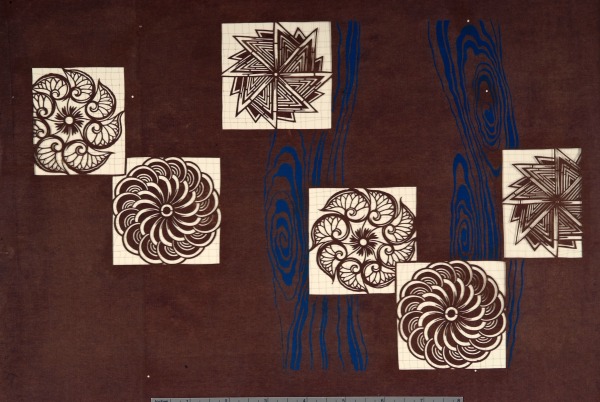Nejiri (twisted) pattern
Brief description
Nejiri (twisted) pattern katagami stencil, 1868-1880
Date
1868-1880
Dimensions
height: 420mm
width: 340mm
stencil height: 358mm
stencil width: 230mm
More details
Nejiri incorporated many patterns including water wheels, leaves, the Qinghai wave pattern,and chrysanthemums.Nejiri pattern was often applied to porcelain in the late Edo period (after 1850). In the Meiji era (1868-1911), the Nejiri pattern was combined with the Kanzemizu (flowing spiral water) pattern found in this stencil's pair k1-17, adding an attractive quirky element. This katagami and its counterpart (K1.17) - is not a legitimate Katagami pair, 'Nimai-gata' because 'Gara boshi' cut-outs do not exist. Both are however needed to dye the complete design. A stencil by its nature needs ‘bridges’ to connect areas together, preventing the pattern distorting and ‘islands’ from falling out. The purpose of a second stencil is to ‘print-out’ the bridges or prevent islands being created. This is one of around 400 Japanese katagami stencils which are part of the Silver Studio Collection. The stencils were produced in Japan as a way of applying patterns to fabric, mainly kimonos. The katagami collected by the Silver Studio were used by their designers as reference material to produce their own Japanese-inspired patterns. This Katagami employs the 'Itokake' method of silk thread reinforcement. This is one method of silk thread reinforcement in Katagami. Itoire was a detailed technique which was applied to Katagami by veteran female artisans at Shiroko, Ise, from about 1750 and was used until 1920. See Markham, Mamiko (2018): Katagami technique Itoire. Middlesex University. Journal contribution. https://doi.org/10.22023/mdx.6477776.v1



Comments